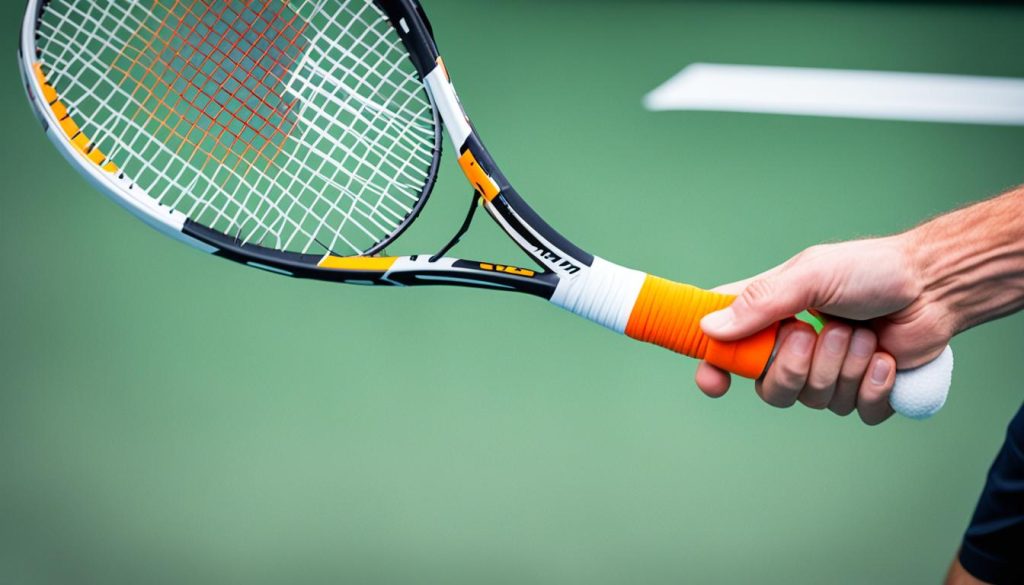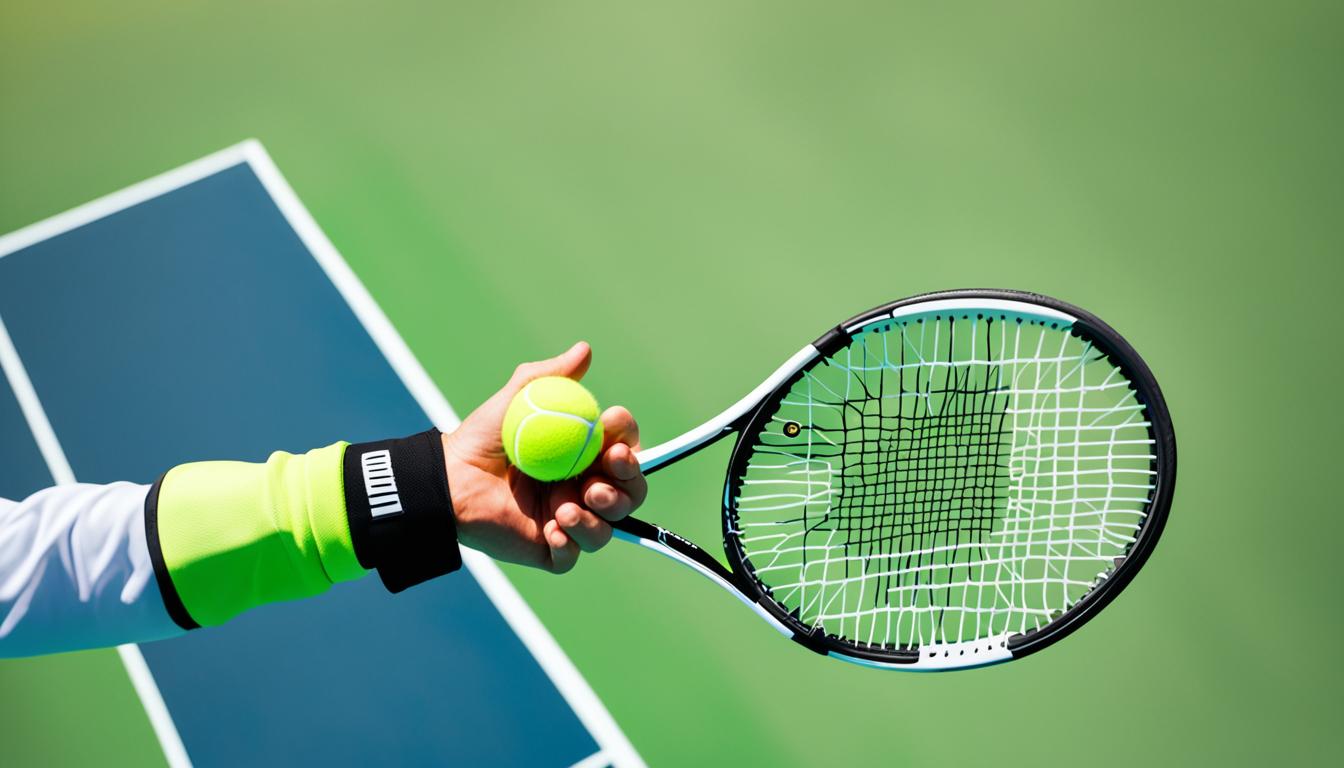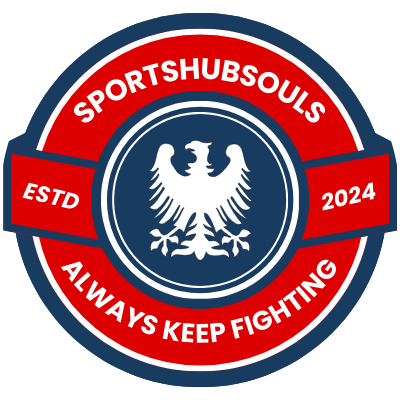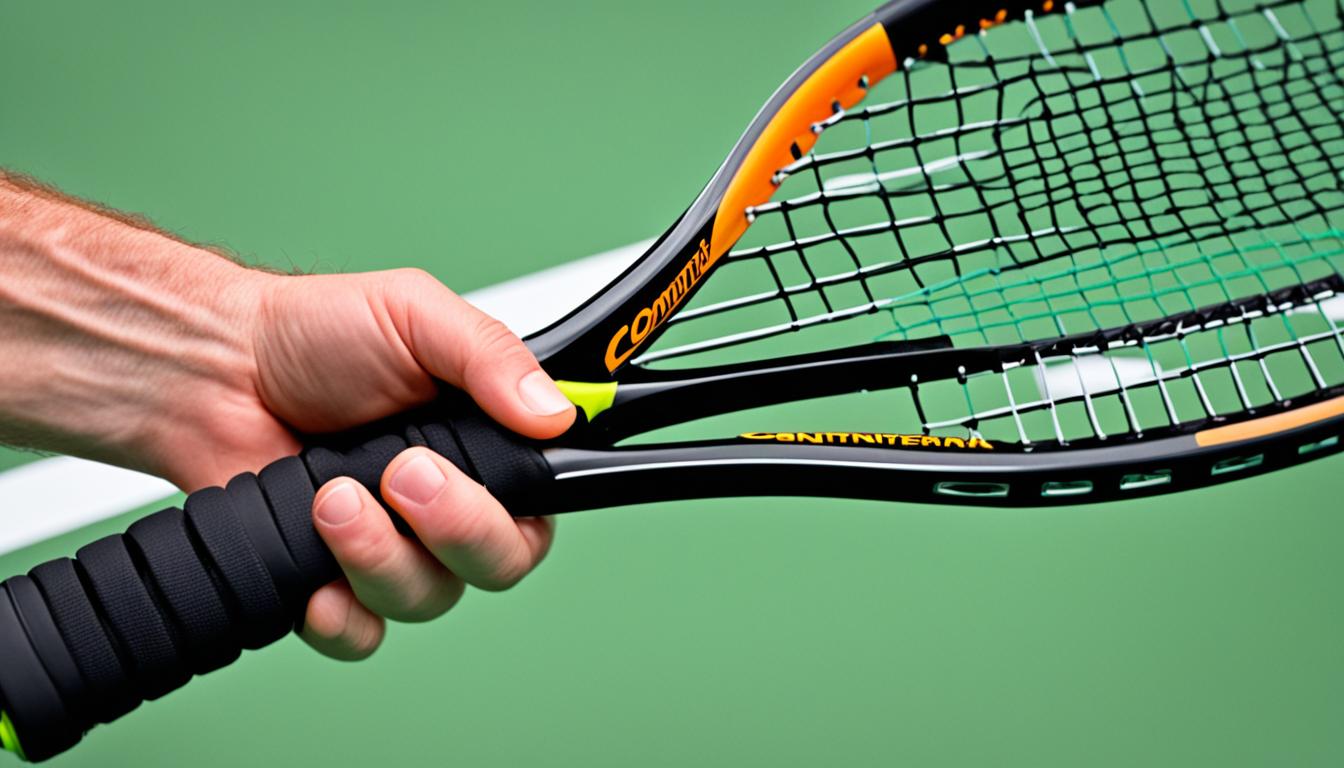Are you looking to improve your tennis game? Have you ever wondered how top players effortlessly command their shots with power and precision? The secret lies in mastering the tennis continental grip. This versatile grip is used for various shots, including serving, volleying, and groundstrokes. But what exactly is the continental grip, and how can you incorporate it into your game? Let’s dive in and discover the 5 easy steps to master the tennis continental grip.
Key Takeaways:
- Mastering the tennis continental grip can greatly enhance your control and power on the court.
- The continental grip is used not only for serves but also for volleying and groundstrokes.
- By following the 5 easy steps outlined in this article, you can learn to use the continental grip effectively.
- The continental grip allows players to generate more spin, accuracy, and versatility in their shots.
- Regular practice and repetition are key to mastering the continental grip and improving your overall game.
Step One – Using the Ideal Grip
In order to master the tennis continental grip, it is crucial to understand and use the ideal grip. The continental grip is the same grip that should be used for various shots in tennis, including the forehand volley, backhand volley, overhead smash, and slice backhand. Additionally, this grip is also suitable for all types of serves, such as the slice serve, kick serve, and flat serve.

The continental grip allows players to utilize two important techniques – supination and pronation. These movements of the forearm, wrist, and hand are essential for generating power and spin on shots. By implementing the continental grip, players can enhance their control and achieve better results in their game.
Using the continental grip provides the foundation for effective shot-making in tennis. Whether it’s a forehand volley, backhand volley, overhead smash, or slice backhand, the ideal grip enables players to have better control over the racket, leading to increased accuracy and power.
Benefits of the Continental Grip
- Improved control and accuracy
- Enhanced power and spin on shots
- Consistency in shot-making
- Efficient execution of various serves
In the next section, we will discuss the importance of achieving a consistent ball toss in order to maximize the effectiveness of the continental grip.
Step Two – Consistent Ball Toss
In order to master the tennis continental grip, it is crucial to develop a consistent ball toss. Consistency in the ball toss is key to achieving better control and accuracy in your serves.
When executing the tennis serve, it is important to keep the ball toss height within a specific range. The ball toss should not go higher than six inches above the contact point. Tossing the ball too high can make it difficult to hit the ball in the sweetspot.
“The sweetspot is the ideal point on the racket where the ball should make contact. It provides maximum power and control.”
When the ball is tossed too high, it tends to travel downward at a faster speed, making it challenging to strike the ball in the sweetspot. By keeping the ball toss around the contact point height, you allow the ball to momentarily stop before making contact.
This momentary pause in the ball’s trajectory gives you better control over the timing of your swing, allowing you to make contact with accuracy and precision.
Having a consistent ball toss not only helps with precision but also ensures better ball control. By practicing your ball toss and maintaining a consistent height, you can fine-tune your serve and improve your overall performance on the court.
Benefits of a Consistent Ball Toss
A consistent ball toss offers several advantages:
- Improved Timing: A consistent ball toss allows you to time your swing accurately, resulting in more effective serves.
- Enhanced Control: With a consistent ball toss, you have better control over the height and speed of your serve, enabling you to vary your shots strategically.
- Increased Accuracy: By maintaining a consistent ball toss, you can consistently hit the ball in the desired location, increasing your overall serving accuracy.
By focusing on developing a consistent ball toss, you can enhance your overall game and take your serving skills to the next level.
Step Three – Reaching a Good Trophy Position
The third step in mastering the tennis continental grip is to reach a good trophy position.
The trophy position is crucial for achieving balance and setting up the perfect shot. It is similar to a throwing position, where your non-hitting hand points upwards to help stabilize your body. This hand positioning contributes to overall balance and control during the stroke.
At the same time, you need to pay attention to the angle of your hitting arm. Ideally, your hitting arm should form a 90-degree angle, allowing for optimal power and precision. It acts as a lever, utilizing the strength in your arm and shoulder to generate racket speed.
Another key aspect of the trophy position is the position of the racket tip. The tip of your racket should be pointing upwards towards the sky, ready to make contact with the ball. This positioning ensures maximum coverage and control during the stroke.
Lastly, maintaining a good knee bend in the trophy position is crucial. The knee bend helps to stabilize your lower body and further enhances the power and control of your shot. It adds stability and allows for a smooth transfer of energy from your legs to your upper body, contributing to the overall fluidity of your stroke.
By reaching a good trophy position, you lay the foundation for a strong and efficient stroke that incorporates the advantages of the tennis continental grip.
Trophy Position
| Trophy Position | Key Elements |
|---|---|
| Non-hitting hand | Points upwards for balance |
| Hitting arm angle | Forms a 90-degree angle for power |
| Racket tip | Pointing upwards for control |
| Knee bend | Ensures balance and enhances power |
Step Four – Using Pronation During the Contact Zone
Now that we have covered the basics of the tennis continental grip and its benefits, let’s move on to step four of mastering this technique. Pronation plays a crucial role during the contact zone, enhancing your shot’s power and speed.
Pronation involves the movement of your forearm, arm, and shoulder during and after contact with the ball. When using the continental grip, it’s essential to allow your forearm, arm, and shoulder to supinate prior to contact and start pronating during contact. This pronoation movement accelerates the tennis racket head, maximizing the power and speed of your shot.
By utilizing pronation, you can generate additional force and spin on the ball, making your shots more difficult for your opponents to handle. This technique requires coordination and practice, but it can greatly improve the effectiveness of your strokes.
To better understand the concept of pronation and its application in tennis, consider the following quote:
“Pronation is a crucial aspect of mastering the continental grip. It allows players to unlock the true potential of their shots and achieve greater acceleration. By harnessing the power of pronation, we can take our game to the next level.”
The Contact Zone: A Crucial Moment
The contact zone is a crucial moment in any tennis shot. It refers to the point where the tennis racket makes contact with the ball. During this moment, the combination of the continental grip, pronation, and other factors determines the quality and effectiveness of your shot.
It’s important to practice perfecting your contact zone by focusing on the timing, angle, and acceleration of your stroke. With the right technique, you can exert more control over the ball and increase your chances of hitting a winner.
Now, let’s take a closer look at how pronation impacts the contact zone:
| Pronation in the Contact Zone | Benefits |
|---|---|
| Pronation of the forearm, arm, and shoulder during and after contact | Maximizes power and speed of the shot |
| Enhances acceleration of the tennis racket head | Allows for stronger and more penetrating shots |
| Creates additional spin on the ball | Makes shots more difficult to return |
As you can see from the table above, utilizing pronation in the contact zone offers numerous benefits for your game. It allows you to generate more power, achieve greater acceleration, and create additional spin on the ball, giving you a strategic advantage on the court.
Practice incorporating pronation into your shots during training sessions. Pay close attention to the positioning of your forearm, arm, and shoulder as you make contact with the ball. With consistent practice and focus, you’ll develop the muscle memory and technique needed to use pronation effectively.
Now that we’ve covered step four, let’s move on to the final step – using a good follow through and finish to complete your shot with finesse.

Step Five – Using a Good Follow Through and Finish
Now that you have mastered the tennis continental grip, it’s time to focus on the final step – using a good follow through and finish. A proper follow through and finish are crucial for maximizing the effectiveness of your shots and preventing unnecessary stress on your shoulder muscles.
For right-handers, a telltale sign of a correct follow through is when the racket head finishes close to the left hip. This position allows your shoulder muscles to slow down naturally and relax, reducing the risk of strain or injury. It also promotes a smooth and fluid motion, enhancing the overall technique and efficiency of your shot.
To better understand the importance of a proper follow through and finish, let’s take a closer look at the biomechanics involved. When you swing the racket, all the energy generated from your body and the continental grip is transferred to the ball at the moment of contact. The follow through and finish serve as the release valve for this energy, allowing for a controlled and coordinated motion.
Think of it as a seamless continuation of your swing. As the ball leaves the strings, continue your swing motion with the racket head crossing over your body towards the left hip. This action not only ensures that you are fully committed to the shot but also helps maintain balance and stability throughout the stroke.
“A good follow through and finish complete the kinetic chain of your stroke, facilitating the transfer of power and reducing the stress on your shoulder muscles.”
Additionally, a smooth and well-executed follow through and finish affirm your confidence and commitment to the shot, which can have a psychological advantage over your opponent.
Keep in mind that the follow through and finish should feel natural and relaxed, allowing for a seamless transition from the moment of contact to the completion of the stroke. Avoid abruptly stopping or tensing up after hitting the ball, as this can disrupt the flow of your swing and decrease the accuracy and power of your shots.
As you practice using a good follow through and finish, pay attention to the feeling of relaxation and fluidity in your shoulder muscles. Focus on maintaining a smooth and balanced swing, striving for consistency and control in every shot you make.
Summary
In summary, the fifth and final step in mastering the tennis continental grip is to use a good follow through and finish. By aiming to finish close to your left hip, you allow your shoulder muscles to relax naturally and prevent unnecessary stress. A proper follow through and finish complete the kinetic chain of your stroke, facilitating the transfer of power and contributing to the overall technique and efficiency of your shots. Practice incorporating a smooth and balanced follow through into your game to elevate your performance on the court.

Conclusion
Mastering the tennis continental grip is crucial in elevating your game and perfecting your technique. With this grip, you gain the necessary tools to unleash power, control, and accuracy in every shot. By following the 5 easy steps outlined in this article and committing to regular practice, you can establish a solid foundation in effectively using the continental grip.
By incorporating the continental grip into your game, you open up a world of possibilities for your tennis skills. Whether it’s the serve, volley, overhead, drop shot, or slice, the continental grip empowers you with versatility and confidence. It allows you to dominate the court with shots that are not only powerful but also precise, lending you an advantage over your opponents.
Remember, mastering the continental grip takes time and dedication, but the results are well worth it. As you continue to refine your technique, you’ll notice significant improvements in your overall game. So, get out on the court, practice with purpose, and watch your tennis skills soar to new heights.
FAQ
What is the tennis continental grip?
The tennis continental grip is a versatile grip that is used for various shots in tennis, including the serve, volley, overhead, drop shot, and slice.
How can I use a continental grip in tennis?
The continental grip can be used for the forehand volley, backhand volley, overhead smash, slice backhand, and all types of serves.
What are the benefits of using a continental grip?
Using a continental grip allows players to have better control and power over their shots, enabling them to hit various types of serves and improve their overall game.
How can I master the continental grip?
Mastering the continental grip in tennis involves five easy steps: understanding and using the ideal grip, having a consistent ball toss, reaching a good trophy position, using pronation during the contact zone, and using a good follow through and finish.
Is the continental grip suitable for both forehand and backhand shots?
Yes, the continental grip can be used for both forehand and backhand shots, including volleys and slices.






